Spring Edition can be found here .
Hello everyone and welcome to another installment of my Tri-annual game review roundups! This is the second in the series of three that I will be doing for the year. Having been busier in the late spring and summer months, my list of games is naturally shorter than my previous set of reviews. Despite having played less games, I still have some heaters lined up and maybe even a surprise hidden up my sleeve.

Ratings breakdown
I won't go into detail about the ratings but if you want some more context I go into it in my first review. I'll still include a quick explainer for the ratings here.
- Gameplay
- Feel, control, and fun.
- Narrative
- Story, presentation, and delivery.
- Visuals
- Graphics, direction, style, and visual flair.
- Music
- Music, sound design, and how it meshes with gameplay.
- X-Factor
- Uniqueness, new ideas, or things that set the game apart.
- Overall
- Taking everything into account, not necessarily an average.
The summer of games
Going into the summer I had one major goal: start and finish Alan Wake 2. Aside from that I was going to play games mostly by feel. I still have a short backlog of games I plan to finish by the end of the year, however I don't like to force starting them up. I believe being excited to sit down and play a game is important to the experience. I have a running list of games I intend to play in a rough order to play them, and that list has evolved significantly over the past months. The games I started with in the late spring had a very contrasting tone than one of a bright warm summer.
Animal Well
The time has finally come that Animal Well has been released to the people. I have been looking forward to this game since its initial launch announcement a couple years ago. I'm not one to get too caught up in the hype of game releases, especially ones announced years in advance, but something about the initial reveal trailer drew me in. A furball walking around a dimly lit world with some spooky animals all in a style where every pixel looks like it was manually placed really spoke to me.
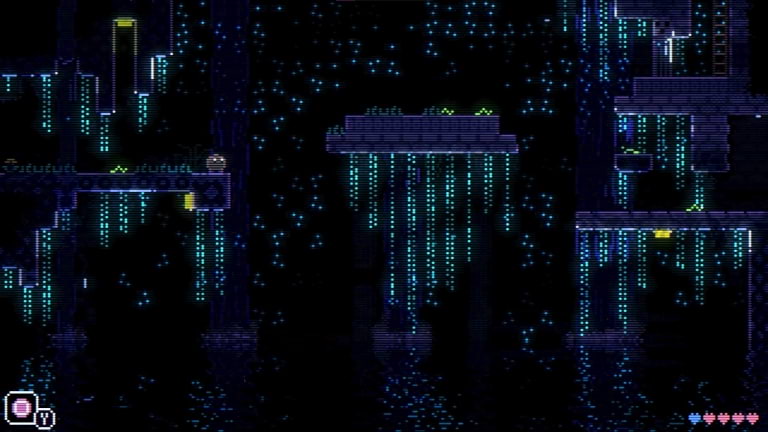
I can't talk about Animal Well without first mentioning the visual style. It is very pretty. A lot of games that take the 8 or 16 bit pixel art approach I usually dismiss as less of a decision and more of "this is how I make something look retro" default. This is very much not the case for Animal Well. The sprite work is extremely well done and the colour palette gives everything a very somber and moody attitude. The way vines and dangle from ceilings as a series of loosely attached pixels rather than drawn sprites give a sense of mawkishness while not detracting from the mood. Many of the larger creatures dwelling in the well have highly detailed sprites, giving them a greater sense of importance. The creator has also gone on record talking about how there are aspects of the art that are procedurally generated to give a sense of unease to how certain things move. I must say, this definitely comes out and slaps you in the face at some parts.
The use of light in the game is also phenomenally well done. The way certain objects shimmer or illuminate when light hits them makes everything feel a lot more natural and less like static sprites. The light being fully dynamic makes the way you approach hidden nooks and crannies important. The refraction of light off steam and mist make some rooms absolutely gorgeous. While gameplay and puzzles are not directly impacted by the lighting system, it gives a kind of breath to the game, almost as if it itself is a living character.
The actual moment to moment gameplay for Animal Well is also very strong and quite enjoyable. It is at its core a 2D exploration based platformer game and follows a lot of the conventional patterns you may find in those games. Something it does very well is treating individual rooms and small portions of the map as a puzzles. Progress is dictated not only from wandering around to find the right wat to go, but solving small but well laid out puzzles. Whether they are isolated to a single room or require you to have a mental map of a handful of rooms, I always felt as if I had something to do or figure out beyond just finding the right way to go.
As for my personal play through experience, I enjoyed my time with the game a lot. The pacing felt perfect and I was never lost. There is almost always at least a single spot in these types of games where I look up where I need to go because I feel as if I've exhausted all my options, and that never happened in my play through. There are a ton of secrets and collectibles and while I wanted to continue searching for them after I finished the game proper, hitting the end and needing to backtrack a full area kinda put me off of wanting to continue. I've looked up some of the more esoteric secrets and easter eggs the game has to offer and there are swaths of secrets that are absolutely insane to not only find, but consider are even hidden there in the first place. This is 100% a game I plan on revisiting and deserves all the love and attention it has gotten.
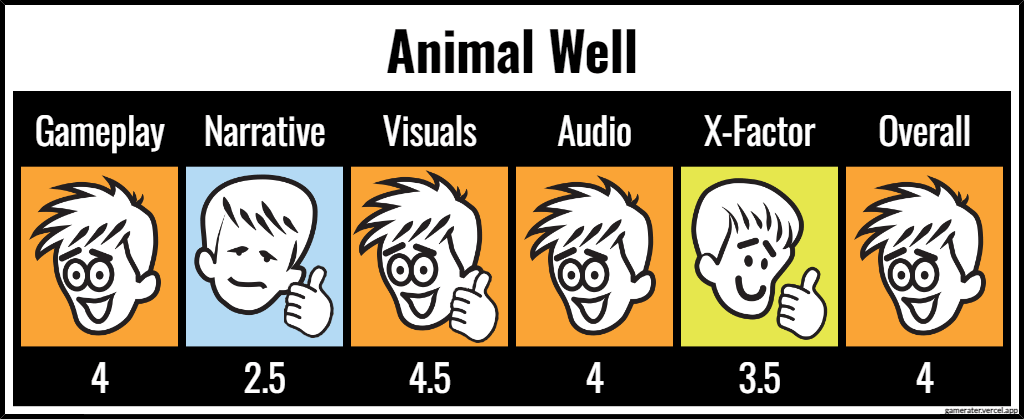
Disc Room
This is one of those games that I knew about when it came out, and only played it because I bought it on a massive sale. It's a bullet hell game where you progress through a map of individual rooms populated by buzz-saw discs flying around. Achieving certain objectives in a room unlocks different paths on the map. Objectives can be as simple as "survive for X seconds" or as obtuse as "??? ????? 25 ????". There are a variety of abilities unlocked throughout the game which while helpful, also serve as a means to solving puzzles hidden throughout parts of the map.
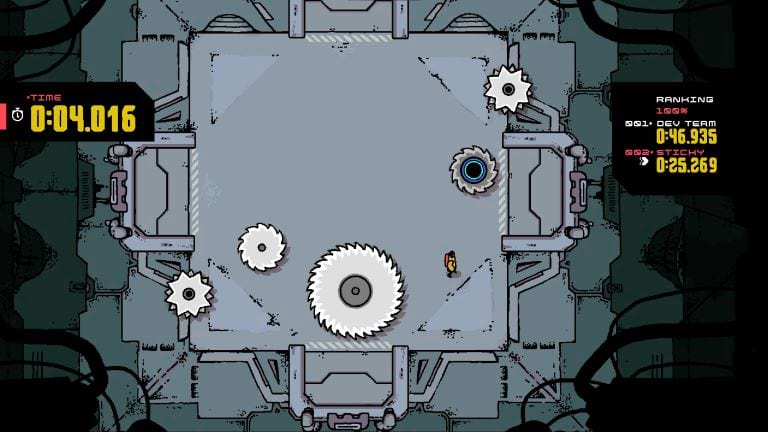
Despite having little to no interest in the game on launch, this game hit and it hit hard. I'm not really sure how to explain it, but the gameplay has an almost addictive quality to it. The game does an excellent job at keeping milestones within rooms feel very achievable, but actually are quite difficult to hit. There are multiple levels of objectives to hit in each room which helps a lot in keeping the pacing of the game feel like you are always progressing. If I ever felt annoyed or frustrated with a room there were always multiple options to move forward with other rooms and paths in the game.
The final aspect of the game I want to touch on is the story. It's nothing groundbreaking, but even having something in a game as simple as this is a welcome addition. It has an air of mystery to it, and after vanquishing the boss of an area you get a little snippet in a comic page set of panels. On top of this there are hidden rooms you can find that have cryptic symbols in them and oddly behaving discs. Puzzling out what needed to be done for these areas led to a secret ending and was quite satisfying to find. Disc Room offers a lot of variety in both action gameplay and puzzle solving.
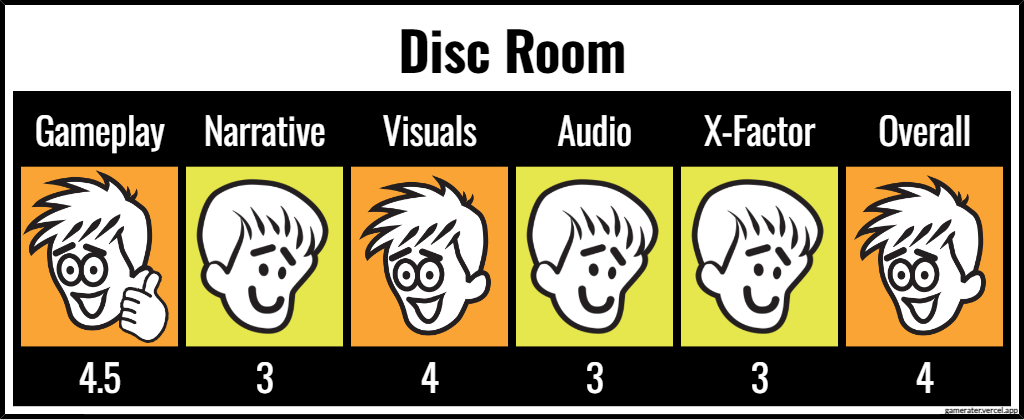
Alan Wake 2
This game inspires me to be creative and make something. I've put off writing about it while putting these reviews together as I feel that I cannot properly articulate how fantastic this game is. It isn't the best game I've ever played, not really even close to that to be honest. However, its presentation of world, narrative, and atmosphere are so wonderfully well made and blended together that it can stand amongst games I would consider masterpieces.
I don't even know where to begin with this game. Alan Wake 2 is wonderfully weird, horrifying, fun, interesting, cool, and best of all, creative. While the game is marketed and sold as a AAA survival horror game, in my opinion that is merely a facade. To me, it excels at being a third person FMV game, driven by narrative and creative direction. A lot of the survival horror chunks of game often felt clunky. As I went through the game there were sections that I wish I could just speedrun through as I wanted to return to the more inspired portions of the game. That's not to say I disliked what one would consider the standard gameplay of Alan Wake, but rather parts of it felt weak and didn't hold up to the rest of the game.
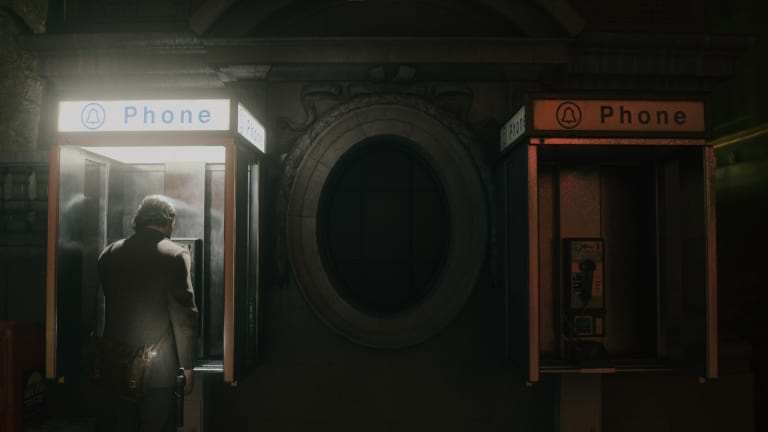
As a direct comparison to Alan Wake Remastered, the combat is better but is not that drastic of an improvement. I felt a lot less powerful than in Alan Wake 1 which is definitely a good thing. Running and gunning is fun but at a certain point in the remaster the dark presence did not feel like much of a threat and they had to throw more and more enemies at you. Alan Wake 2 has a far less steep power creep and even later into the game I still occasionally found myself running out of ammo and being put into dire situations. The game took a less is more approach to the amount of enemies and it made moments where there are strings of enemies feel more dangerous.
The variety in which you can tackle combat sections, while not high, feels varied enough. I did miss acquiring a new weapon quite early in the game so it was pretty stale for the first half or so of Saga's section, but that is definitely my fault. The different guns and items you can use get pretty fun. The variety of enemies is not very high as well, but it's enough to not get bored of them. There are some great combat orient moments in the game, despite not being a combat first game. I don't want to go into much detail about what I would consider the boss sections as I feel all that is involved with them is a bit spoiler-y to the plot. But, they are awesome and each one I went through was cooler and more fun than the last.
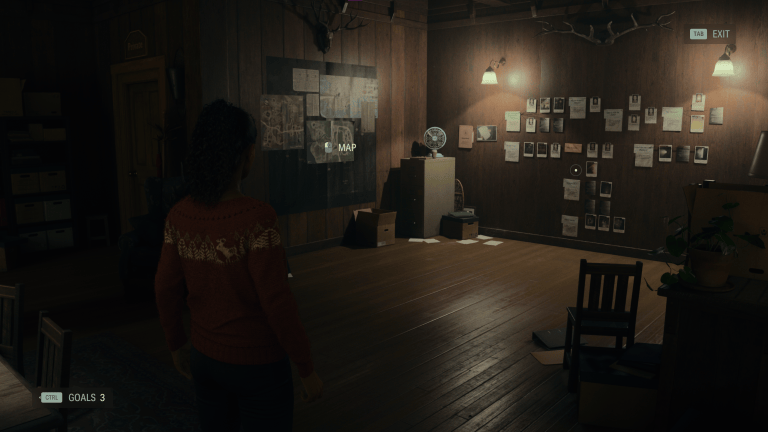
The menus are all made to be an active part of the game. Saga has a "mind place" which is essentially a physical space someone imagines in their head to organize thoughts and information. The idea being that if you physically place a piece of information to a specific location it is easier to recall at a later date. It's actually a study technique my friend from college used which I always thought was really impressive, but I digress. Saga's mind place is the main menu for the game, where all of the case information is held, where the map is, and even where you upgrade weapons. It's a physical space you can walk around and doesn't pause the events of the game. So if you're in the forest looking at the map someone can come up to you and smack you on the head.
Alan's segments of the game has a similar mechanic to Saga's mind place. While his may be a bit more barren, he has a unique mechanic being the plot board. The plot board is where scenes of the current story unfolding are pinned to. As he comes up with different ideas and story beats, you unlock the ability to set a main theme to a scene. Doing so affects the game world around him changing the environment, enemies, and accessible story points. It's a very cool idea and is executed quite well. There is always some scene and theme that pushes the main plot forward, but many of the combinations simply add a bit of flavour and context to the greater story as a whole.
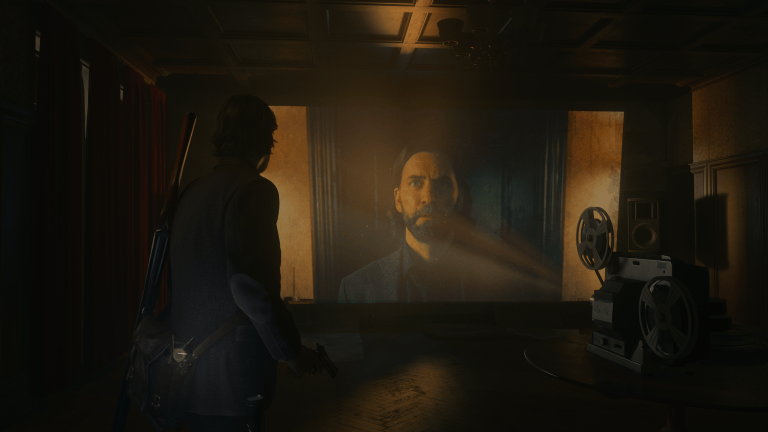
I cannot write about this game without mentioning how beautiful it is. I generally am a style over realism kind of person when it comes to graphics. Somehow Alan Wake 2 manages to do both and blend them together beautifully. The models, textures, and use of colour are insanely well done. Everything looks fantastic even without the best computer possible. All of the additional bits of flavour text the game has peppered throughout it are also designed just wonderfully. One of my main complaints from Control was that all of the letters and correspondence were the same white sheet of paper, and Remedy has totally upended that and addressed it here. Every little piece of paper, every street sign, posters on the wall, they all have their own personalities. I'm a total sucker for that.
If you've read my previous game review round-up, you know that I love full motion video (FMV) games, as well using FMV in regular games. At this point I feel like it would be beating a dead horse to go into detail about it here since I've already talked about it so much in my write ups for Alan Wake Remastered and Control, but somehow they've totally outdone themselves. It blends so well into the game and plays a great role in the overall narrative. What they do gives characters a soul and makes them feel so much more real (well, they are real people in the videos). I also can't understate how all out they have gone for these segments of the game. There are entire chapters built around the use of full motion video. It almost felt as if I was a part of the video, affecting how it played out. Not to mention, at a certain part in the Theatre chapter something plays on the projector that is easily one of my favourite moments in any game I have played. It's definitely a spoiler so I will spare you the details, but I'll say you should watch all of it (with subtitles on).
I have absolutely fallen in love with this franchise and its extended universe. There is so much more I wanted to write about (and have already cut), but this has already become too monstrous for the purposes of these reviews. I likely will revisit this game in the future and maybe then I'll write something more in depth that has no bars held on spoilers.
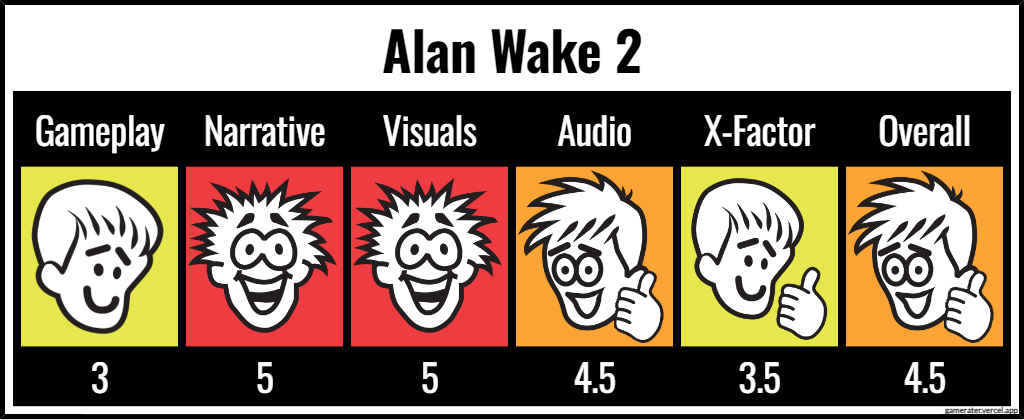
Nintendo World Championships: NES Edition
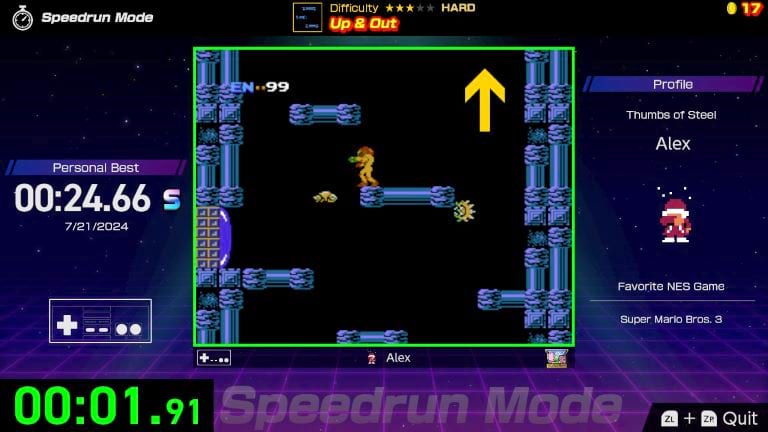
This is one of those games where it feels like the developers dug into your brain and designed something specifically for you. As someone who dabbles in speedrunning, they absolutely nailed both the feel of learning a run as well as the aesthetic of the "I just need a recording of my run" setup. The timer straight up being the LiveSplit timer is just 👌.
Each games set of mini challenges I would say are all pretty well put together. Having the beginner challenges be extremely short 2-5 second segments is not only a great way of easing you into a game, but also does a fantastic job of getting you addicted to push for a lower time. Cutting off 0.08 seconds from my time and going "this was shit I can do better" was a common occurrence.
At first I was pretty bummed out about not having leaderboards available for each of the challenges. It's a very classic Nintendo moment. However, playing a bit post launch I did quickly switch my opinion to be on the side of no leaderboards. Seeing the times that some people had and the strats they used for the online challenge gauntlet led me to believe that having a leaderboard good be discouraging to people. My friends and I set up a spreadsheet of all the levels to have our own makeshift leaderboard though. This likely was also something that quelled my want for a global leaderboard as it was more fun to push to try and beat my friends. Now that we all have slowed down on playing the game, the want for a global leaderboard has crept back in. Seeing that a levels time could be lower is very nice to have. Knowing if your strat has a significant gulf in time compared to ones above is very useful to encourage oneself to explore other strategies or options. Overall I understand why there aren't leaderboards, but I do think that not even including a Switch friends one is a huge misstep.
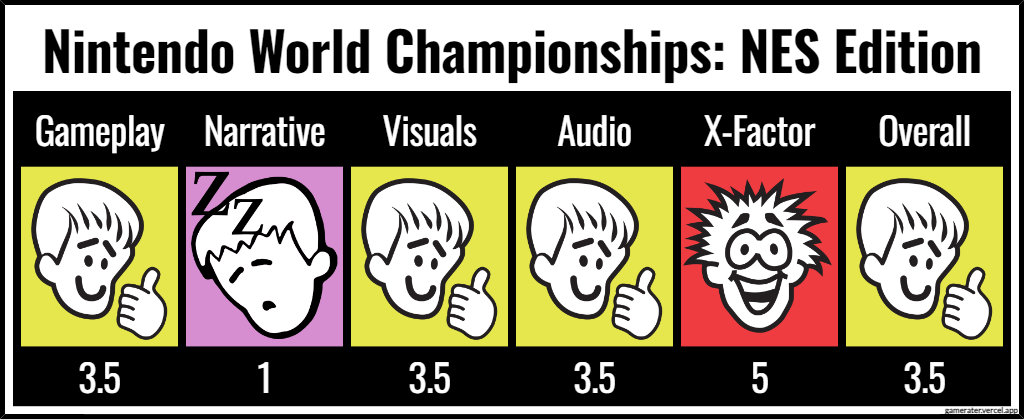
Metroid: Zero Mission
I started this game on a wim on the train ride to my partner's parents' house. A decision made admittedly after the seeing the Metroid Prime 4 trailer from a recent Nintendo Direct, as well as from the high of ascending the Metroid Elevator challenge in Nintendo World Championships for like 3 hours with some friends.
Overall I don't actually have much to say about this game. As a remake of the original Metroid, I would say it's a worthy successor. It adds all the quality of life updates you would want from Super Metroid while also improving movement and combat, which may be purely because it isn't a laggy mess on the NES. They also removed some of the obtuseness of what direction you need to go in by adding a guiding dot to the map when stepping onto certain Chozo statues. As someone who doesn't mind wandering around exploring, I could take it or leave it. It definitely stream lined my play through but wasn't so hand-holdy that it felt like I was being told where to go at all times.
The new additions make the game feel quite complete. I played the original Metroid a fair amount as a kid and a lot of the depth of that game felt like it came from a lack of being able to direct oneself. The new additional locations and power ups make it feel far more expansive, and the zero suit end portion is a fun and cool addition. However, Zero Mission doesn't outright replace the original. As much as I dislike that game (and the NES in general), there's something to be said about playing something with such extreme restrictions to it. Making your own map and experiencing a total lack of direction can be magical if you have childlike wonderment.
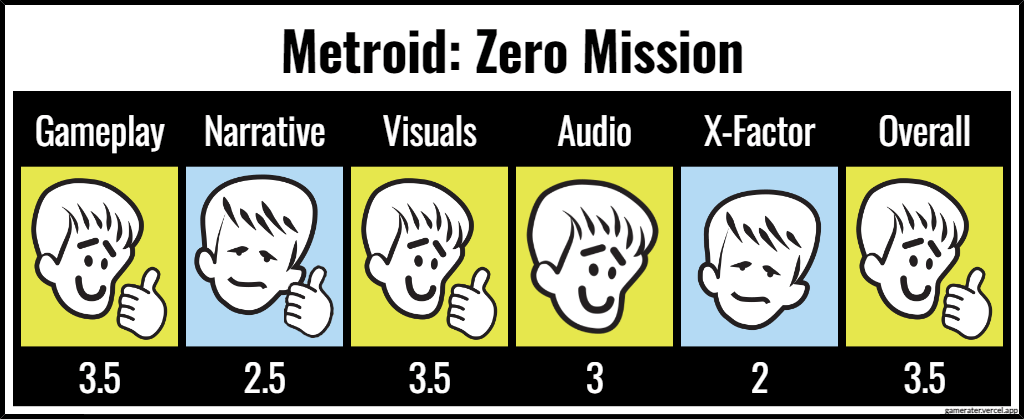
Metroid Fusion
This was a very interesting game to have played immediately after Zero Mission. I have quite a few gripes with it, but it also is really cool. Being the first of the two GBA games, there was a clear downgrade to some of the gameplay elements. Lacking being able to switch between map sub-areas and normal blaster shots not revealing critical path destructible blocks were my two main complaints. The latter more so was a symptom of underestimating how cryptic some of the critical paths could be, which was in part to how linear the game starts off.
As a Metroid game, obtuse paths, maze like areas, and a total lack of direction can be expected. Metroid Fusion was the complete opposite of this. Or at least that's how it seemed. The game has a helpful AI NPC who guides you through each of it's six sub-areas and one hub-area. It is very explicit on where you need to go, what you need to do, and sometimes how you should get there. The sub-areas themselves are also fairly limited in directions you can go, often have one path with a couple branches. Sometimes you even can only progress through four to five rooms before having no visual indication of progressing further.
This is where the obtuse critical paths come in. If you have ever played a Metroid game before it is expected that they will need you to shoot some random wall with a missile to advance forward. The same is true of this game, but as I was playing through it, it was so on rails up to these points that one I reached a point of backtracking I thought I had fucked up. Most of the time what you needed to do was not so outlandish that I had to look it up. Sometimes blocks are in such a specific spot and only a single one can be hit that it feels outright mean. The variance in how linear the game is to suddenly be a game of whack-a-mole with every block in five rooms was so jarring and frustrating.

All of those criticisms aside, I liked the game a lot. The story isn't anything mind blowing but having a dialogue between your AI friend and Samus kept things interesting. The sub-areas having vastly different biomes was great and kept exploration feeling fresh, while also remembering landmarks very easy. The game actually opens up quite a bit closer to the end third and issues of it feeling very linear lessen greatly.
The enemies in all have a really cool gimmick to them. Since they are all X Parasites mimicking the inhabitants of the biome they're in, they respawn if Samus doesn't absorb the X after killing them. But sometimes they actually absorb and combine with another enemy on the screen forming a different stronger enemy, giving you incentive to actually finish them off. On the other hand, the bosses area different story. I've never been a fan of bosses in Metroid games and this one is no exception. The bosses are either a total push over, omega hard, or frustrating. It doesn't help that it had probably the worst boss I have ever fought against in a video game. Thankfully the final boss sequence was awesome and left a pleasant feeling in my brain.
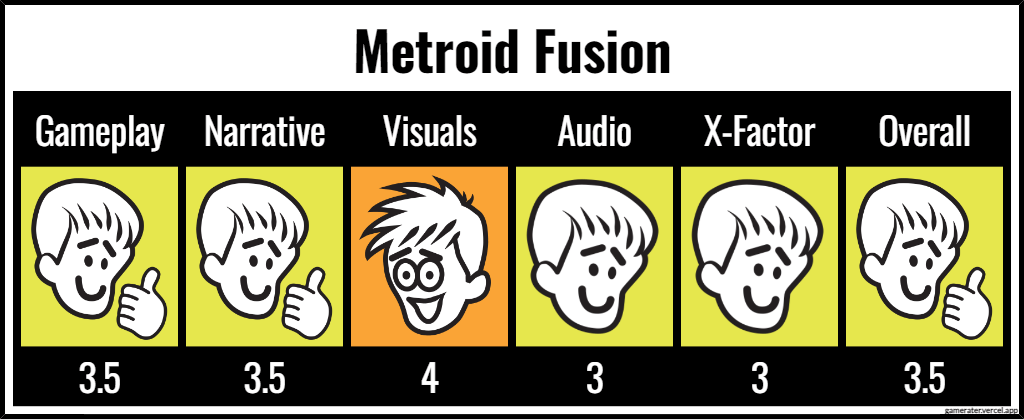
Dishonourable mentions
Before I get into the second tri-annual Game of the Third Award™, I want to quickly talk about a couple games that I played, but didn't finish.
Castlevania: Circle of the Moon
The was the first game I picked up after completing my play through of Castlevania: Symphony of the Night. I booted it up as it was the only one of the three Game Boy Advance Castlevania games I haven't played, and I was still pretty amped up from Symphony of the Night. I gotta say this game stinks. I gave it a couple hours of play time and during all of that did I not once feel any pull to keep playing the game.
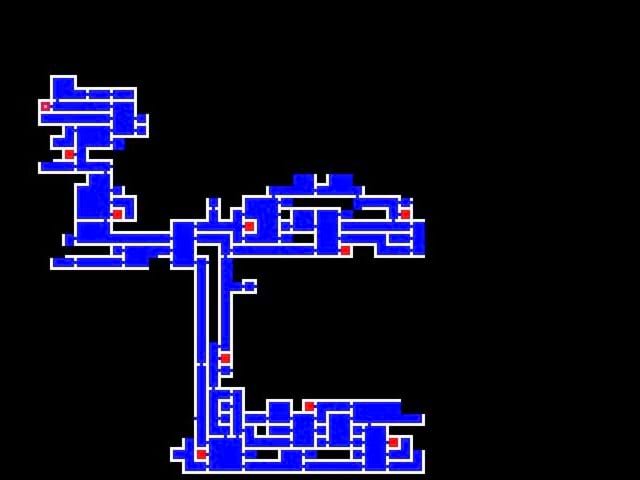
The game was a never ending series of vertical shafts that I platformed up and down through, all sharing a similar platform and enemy layout. Many of the doors you can enter while ascending these vertical rooms lead to a small room with either a health or mana upgrade just sitting for the taking in them. I put in near zero effort to find these upgrades and was given so many I was starting to wonder if they even were having an effect on my stats. Finding what is supposed to be a beneficial upgrade and having the reaction of "ugh not another one" is quite the accomplishment for a game.
The combat, basic enemies, and bosses from what I saw were nothing spectacular. All of it was some pretty expected entry level stuff from a Castlevania game. Rather than equipping new weapons, the game has a system where you can mix and match two cards to apply an effect to your attack. The Dual Set-up System seems like a cool idea but from my brief excursion with the game I only found a total of three different cards. Each of the combinations had a very basic change to my whip that applied an elemental effect which did a bit extra damage to enemies. From what I saw these different elements were resisted by certain enemy types and I can only assume some are more effective as well. Referring to a chart of all the combinations online it seems like other cards do have a greater change to not only your attack but also stat boosts. It would have been fun playing around with this system, but unfortunately it was attached to vertical shaft simulator.
While I can't give Castlevania: Circle of the Moon a fair rating, from what I've played I would not recommend it.
Downwell
Downwell is a game that I have heard about in passing, but have never tried. It's a fairly neat concept on paper, and combined with the fact that it is unbelievable inexpensive on steam when on sale, I figured why not give it a try. While It certainly is not a dishonourable mention, I didn't end up liking the game very much and made little progress in it after playing for a couple hours.
The level of difficulty is significantly higher than I would have expected going into it. You fall fairly quickly and it can be very hard to react to incoming enemies to either move out of the way or towards them to bounce on their head. As a result I found myself using the gunboots to try and slow my descent. While somewhat effective, the side effect of this was that I would never have ammo for when I actually needed it. Bopping enemies on the head refills ammo, but I would either accidentally kill them or try to hit their head but end up being to slow and slam into them on the side taking damage. My best runs were often from taking the descent incredibly slow, which felt counterintuitive to how the game wanted me to play. I didn't feel like I was getting any better at making progress and when I actually did get further than usual it felt like it was because I was getting lucky.
I played enough to unlock a few of the different game styles, which are modifiers to how the game functions. None of the ones I had unlocked felt like they actually changed gameplay up at all. The variety of items and power ups I encountered in my runs were fairly limited and were all general upgrades to the player's basic stats. It would have been more enjoyable if there were modifiers to experiment with that changed how the character functioned, but everything was pretty much do this but more now. From a lack of gameplay variety and difficult that leans into the frustrating side, I couldn't say I would recommend the game.
The Game of the Third Award™
The nominees are:
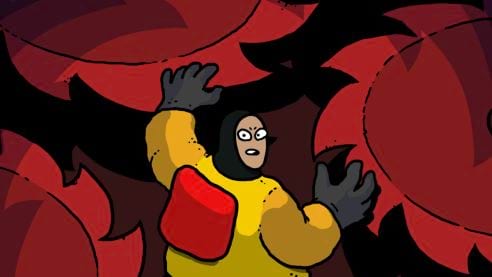
Disc Room
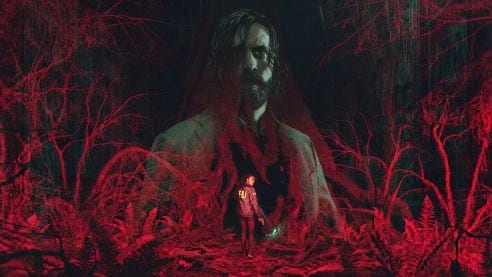
Alan Wake 2
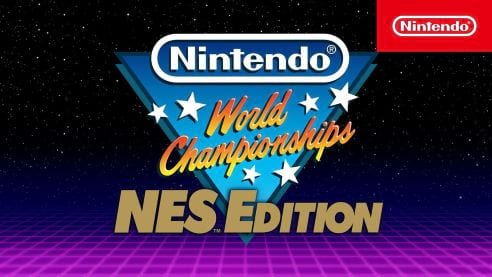
NWC: NES Edition
And the winner is...
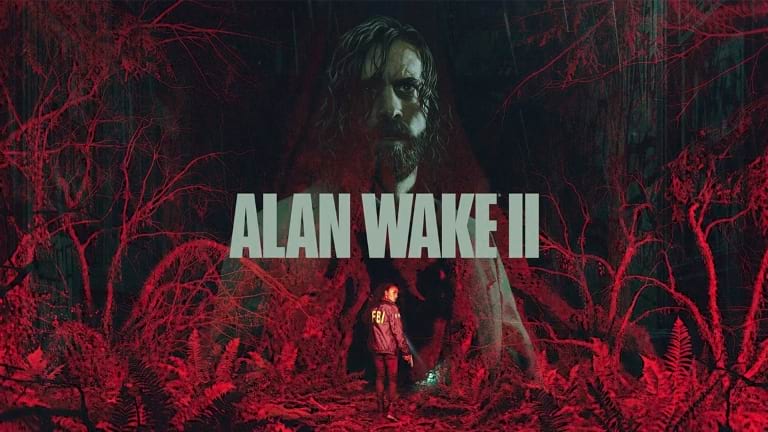
My winner for the Game of the Third Award™ is Alan Wake 2. It probably isn't a surprise considering what I wrote about the game. Remedy is 2 for 2 for The Game of the Third Award™ and I can't wait to play whatever they release next.
Conclusion
Animal Well was the only game I was waiting for a release of these past few months. It was a welcome and natural follow up after thoroughly enjoying Symphony of the Night. I ended up leaning more heavily into the 2D action adventure genre (I shall not say the forbidden word) and frankly had an excellent time with all of the games I played. It's a nice reminder how much I like the genre, even if I have not played many games that fall under its umbrella in more recent years.
I anticipate my next set of ratings and to again not be as large as my first set, but then again I may just feel like staying in all the time now that the sun is going down early. Either way I plan on trying to do something new for the Game of the Three Thirds Award™, so stay tuned.
Thanks for reading and stay frosty.